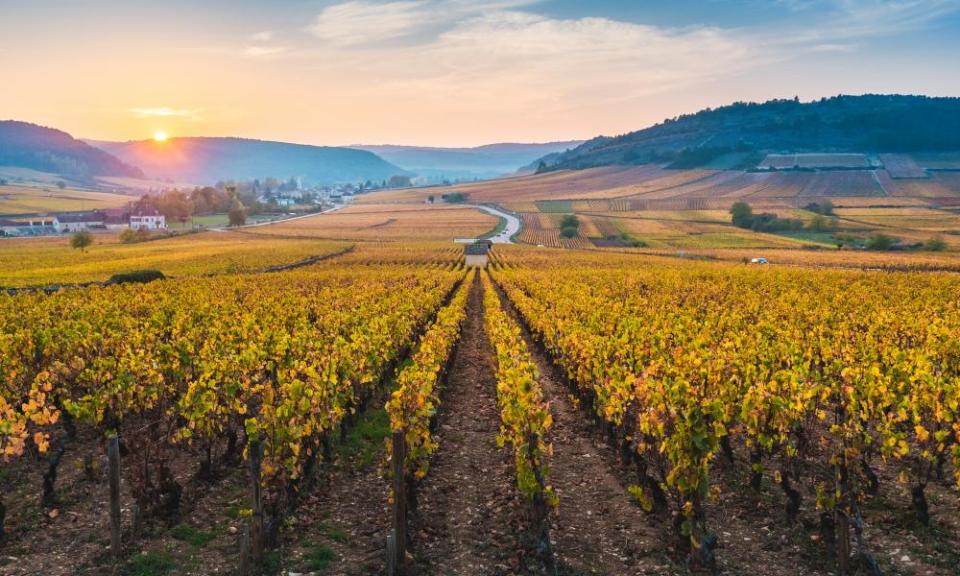How to buy (relatively) affordable Burgundy wines

Comparisons between France’s two most celebrated regions for still wines have tended towards the binary. In the south-western corner stands Bordeaux, cast as the genteel playground of snooty chateau owners – a world of large properties in the hands of either old money or newer, more corporate cash. In the other, eastern corner we have Burgundy, where winemakers are supposedly small-holding farmers rather than businessmen – “real people” in touch with the land but all at sea in a sales and marketing suite.
Although the truth is inevitably more complicated, there has always been enough in the caricature for it to ring true. Burgundy really has had what Jasper Morris, the Burgundy-based British merchant-turned-writer calls a different spirit. Its obsession with making wines that “express the difference between one site and another” has sometimes seemed more important than more base, mercantile ambitions found elsewhere.
Is that still the case? In his introduction to the recently published second edition of his definitive guide to the region, Inside Burgundy, Morris gives voice to some of the disquiet felt about recent developments, which arguably have rendered it more like the stereotype of its old rivals in Bordeaux. The issue is the seemingly never-ending rise in the prices commanded by Burgundy’s most celebrated wines. To pick just one example from the price comparison website wine-searcher.com: five years ago the average price of Domaine Leroy Musigny was an already-eye watering £4,033 a bottle; by June this year it was going for £24,178 a bottle.
The problem isn’t just that Burgundy’s wines are now priced beyond all but the tiniest percentage of wine lovers. There’s been a knock-on effect on land prices. According to figures released by French estate agents Safer in 2019, the price of the top-rated land in the region had doubled in the space of a decade, making a single hectare of “grand cru” land worth on average €14.5m. That in turn has pushed out many ambitious younger producers from the most fashionable addresses, and led to larger firms, such as luxury goods company LVMH, sweeping in.
All of which helps explain why so many Burgundy lovers have grown disillusioned with the region. But it’s far from being all bad news. As Morris says, the only thing that has prevented “a kick-back against the lack of affordable wines” has been the rise of “beautiful wines” from Burgundy’s less fashionable regions and grapes. That might mean pinot noir and chardonnay made by a top producer working in the larger cross-regional appellation of Bourgogne, or from a dynamic young vigneron plying the vineyards of Mâcon, in the south; or it might mean one of the increasingly fine wines made from the much-maligned aligoté grape variety.
In other words, the spirit of Burgundy lives on. You just might have to look a little harder to find it.
Related: Can burgundy on a budget ever hit the spot? | Fiona Beckett on wine
Six (relatively) affordable Burgundy wines
Waitrose Blueprint White Burgundy
France 2019 (£9.49, Waitrose)
With more than 400 winegrower members, the vast Cave de Lugny co-operative is very far from the romantic idea of the small Burgundy domaine. But it makes some excellent value chardonnay, including this soft, gently creamy-peachy example.
Adnams Bourgogne Rouge
Burgundy, France 2018 (£13.99, Adnams.co.uk)
East Anglian merchant Adnams has done exceptionally well to source a good-quality sub-£15 pinot noir from Burgundy: very much bargain pricing for this region. It’s lively, refreshing, fluently red-fruited and light (12.5%) in alcohol.
Domaine Caroline Bellavoine Bourgogne Aligoté
Burgundy, France 2020 (£14.50, thewinesociety.com)
In a region where chardonnay rules, aligoté, Burgundy’s other white grape, has always been rather looked down on. Lately, however, it’s enjoyed a revival, producing wonderfully racy, super-dry and luminously bright dry whites such as this.
Domaine Jean Chartron Bourgogne Blanc Cuvée Eugénie Dupard
Burgundy, France 2019 (£20.35, privatecellar.co.uk)
The majority of this magnificent, resonant, multi-layered chardonnay comes from a tiny vineyard in the famous village of Puligny. As it’s blended with a little fruit from elsewhere it only qualifies for the lesser (and significantly cheaper) Bourgogne appellation.
Domaine Douhairet-Porcheret Monthélie Rouge Cuvée Miss Armande Vieilles Vignes
Burgundy, France 2018 (£24.88, howardripley.com)
Another wine that benefits from being made in one of Burgundy’s lesser-known villages, Monthélie in the Côtes de Beaune. This is very good value in the regional context and a simply delightful expression of pinot noir’s fragrant, silky, elegant side.
Fréderic Cossard Bourgogne Rouge Bedeau
Burgundy, France 2019 (£40, bbr.com)
Fréderic Cossard’s whimsically labeled Bourgogne Rouge is full of charm. A blend of pinot noir from two plots that positively sings and dances with pretty red berry fruit and fresh cherry-ish acidity, but is anchored by classic forest floor savouriness.

 Yahoo Finance
Yahoo Finance 